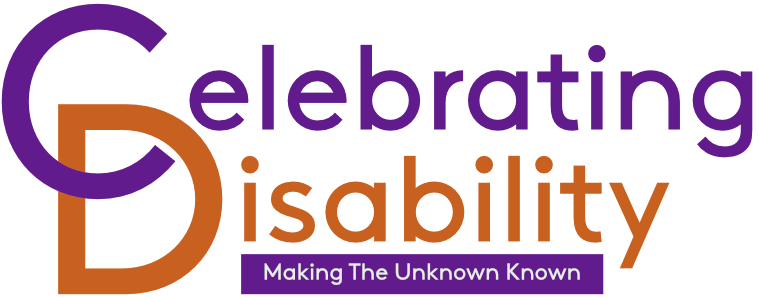Encouraging Discloser – Why It Matters
A few reasons would include:
- Equality
- Fairness
- Justice
- Disabled people deserve to live an autonomous life in society and part of being autonomous, is earning your own money
- Equipment and adjustments that would support your disabled employee or candidate to mitigate the barriers faced on an every day basis. If you don’t know about a persons disability, there is a limited amount you can do to support an individual
There are also very strong business cases for disability in the workplace. Statistics show:
- 15% of the global population are disabled. That is 1 billion people
- In the UK, 1 in 5 people are disabled. That’s 20% of the population or 14 million people
- 2% of disabled adults of working age in the UK are currently in employment – 7.4 million people
- On average, disabled employees take less sick leave per year than non-disabled employees
- The average claim for equipment or changes to workplace to support a disabled person through Access to Work is just £95
- Disabled people are more likely to stay within an organisation if the organisation is inclusive and supports that person
We don’t always see disabled people represented in the workplace for a number of reasons; as a result of statistics above, it is quite difficult to quantify numbers in a specific organisation. Unlike many other protected characteristics, disability is not always obvious. When looking at the demographics of a workplace, it is relatively easy to see the gender split and the ethnic split. However, it is not always obvious to see the disability make up.
Recognising Disability
Additionally, only 1.2 million disabled people in the UK are wheelchair users and only 2/3 of them are full-time wheelchair users. This figure is around 800,000 people. Due to the common depiction of disability being a person in a wheelchair, it is hard for individuals to recognise disability any other way. The only way to distinguish this data is if disabled people are willing and feel able to disclose their disability. As we know, it is not mandatory for a disabled person to have to disclose their disability at any stage.
Disabled people choose not to disclose for many reasons. Many disabled people do not identify as or recognise an impairment as a disability. I have been into organisations where employees have approached me to talk about an issue that they have. When it transpires that their “issue” is a disability, often this has never occurred to them before.
The most prevailing reason for non-discloser is fear of repercussion in the form of discrimination. It is felt by many that as a result of disclosing a disability. opportunities for career progression will be negatively impacted. This is even the case when a disabled person has been working for an organisation for a long time before disclosing. Knowing this extra piece of information, the employer treat the disabled employee differently.
According to a report carried out by Leigh Day entitled “The Purple Workforce”, 47% of working aged disabled people would not feel confident to disclose a disability during the recruitment process. Disabled people in the workplace do not feel supported by their colleagues, by their employer or by senior management.
The Right Time to Disclose a Disability
As a close friend of mine is always quoted as saying “This is the 21st-century!” She is correct. In 2020, these attitudes and expected outcomes of disabled people should not be acceptable. The only way they are going to change is by changing attitudes and perceptions of disabled people. As organisations, we can lead the way to influence this change. If disabled candidates and employees feel included and valued, they will be more likely to disclose a disability.
7 Ways to Encourage Discloser
1. Understand the barriers to employment for disabled people
There are many barriers for disabled people to the workplace. These barriers can include: barriers to the application process, physical barriers to the interview, structural barriers to the organisation and offices, attitudinal barriers of the employees and management. By developing an awareness and understanding of these barriers, you can begin to find ways to mitigate them. For example, by introducing different ways to complete an application form and introducing agile working into your organisational structure.
If you’re not sure where to start, why not start with an audit to find out how inclusive your organisation is? You can then follow this up with mandatory disability inclusion training. To get the best value for money on disability inclusion training and to ensure all relevant topics are covered, ensure that you contract disabled consultants and trainers to deliver these services. The power of lived experience of disability is so beneficial in so many ways, least of all when thinking about designing services that are inclusive of everyone. This blog talks about the power of lived experience in training.
2. Investigate reasons why disabled people are not disclosing
Many reasons could already be listed above but there may be other reasons why employees are not disclosing. As you will be aware, potential employees seek reviews on websites such as glassdoor.co.uk before applying to work at your organisation. If they have heard feedback about your organisation not being as inclusive as others, this could affect their decision to apply for a job with you or to disclose once they are in your organisation. Current figures in the UK show that 83% of disability is acquired. Therefore, it is likely that a large proportion of your employees may acquire a disability in the lifespan of their career.
Prior experience is another reason an employee may choose not to disclose a disability. It may be prior experience retold through a colleague’s experience. Similarly, if a disabled employee experiences your workplace to not be inclusive, this could prevent them from feeling confident to disclose.
Whatever the reason, guesswork is never helpful. Invest time in engaging with your employees to understand how inclusive your organisation is through their eyes. The more specific you are with your questions, the better. There is also no need to hide the reason. As a consequence of being transparent, your employees can be more specific with their answers.
3. Prioritise your communication and delivery method of your findings
After you have collected the data, have a strategy to implement some of the findings and feedback to the participants. Communication is key. You never know if half of the employees who participated in your “surveys” have a disability themselves. By communicating and feeding back in a timely and constructive manner, you may be encouraging a number of people to disclose their disability.
4. Decide on your values around disability inclusion – specifically!
Have you ever seen this video? So many organisations and multinationals talk about priorities around diversity and inclusion. Far fewer talk about specific priorities around disabled people. Disabled people have their own set of wants, needs, desires, experiences, etc. Therefore, deserve specific priorities.
By understanding these priorities and then being able to articulate them, you will be able to say to any potential disabled candidate that comes onto your website or disabled employee already working within your organisation that you value their contribution. Not only do you value their contribution, your specific organisation is prepared, willing and capable of meeting their needs.
5. Update your workplace culture to be inclusive of disability
Taking disability out of the equation for a second, are you going to open up to a manager if you don’t feel that they are going to empathise? Even if this is not the case in your organisation, if a disabled employee feels as though disclosing will have a detrimental impact, they won’t do it, nor would you I don’t think. Take steps to develop a culture of inclusion within your organisation. For example, ensure any events, afterwork get-togethers (formal or informal) and meetings are inclusive and accessible to disabled people.
I often suggest to the organisations I work with to add a mandatory standard conversation starter into the supervision paperwork. The topic/conversation starter can be around health and well-being. This can begin a dialogue to talk about any extra support the employee may need. You could inform your employee about workplace/reasonable adjustments, agile working, access to work and any other support they may need to carry the job out. This may give the employee the confidence (over time) to disclose a disability.
6. Develop organisational awareness of disability. Including societal attitudes towards disabled people
A lot of this would be covered in your training. After developing your awareness of disability inclusion for your organisation, spread the word with your colleagues, employees, partners and suppliers. As a result, this will positively influence their attitude towards disability and the way they were subsequently think about you as an inclusive employer. It will also influence others when they see the varying rewards you reap from being inclusive and being aware of the barriers disabled people face.
As part of your ongoing research, try attending some disability inclusion events. There are some out there. They are harder to find than others but they do exist. You may want to talk to peer organisations to find out what is working for them. Don’t forget your disabled employees themselves, if they are willing to share their experiences, this can be a great source of information to both gain extra knowledge and to start developing those inclusion strategies within your organisation.
7. Redesign your recruitment process to be accessible and inclusive
Many organisations make the mistake of creating an inclusive workplace environment for employees but leaving the recruitment process as it always has been. Therefore, preventing disabled people from entering that workspace. There are many barriers to the recruitment process for disabled people for a variety of reasons. This blog highlights some of them. By ensuring your recruitment process is inclusive for disabled people, you will support disabled people to understand your commitment to inclusion.
The number of disabled people who are not disclosing disabilities to potential employers is growing. As you will have seen above, the reasons for this can be incredibly valid and evidentiary. We will be hosting a webinar on this very topic and offering support and guidance to find ways to support disabled people to disclose. You can find details of our webinar on our Eventbrite page.














